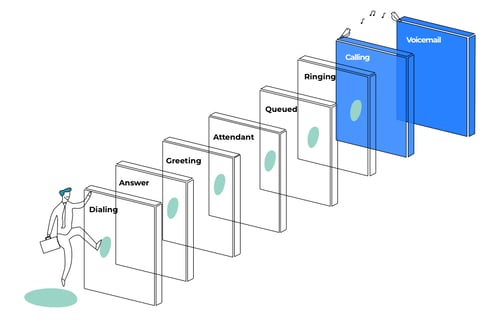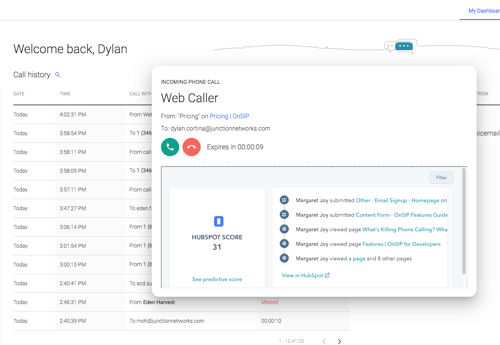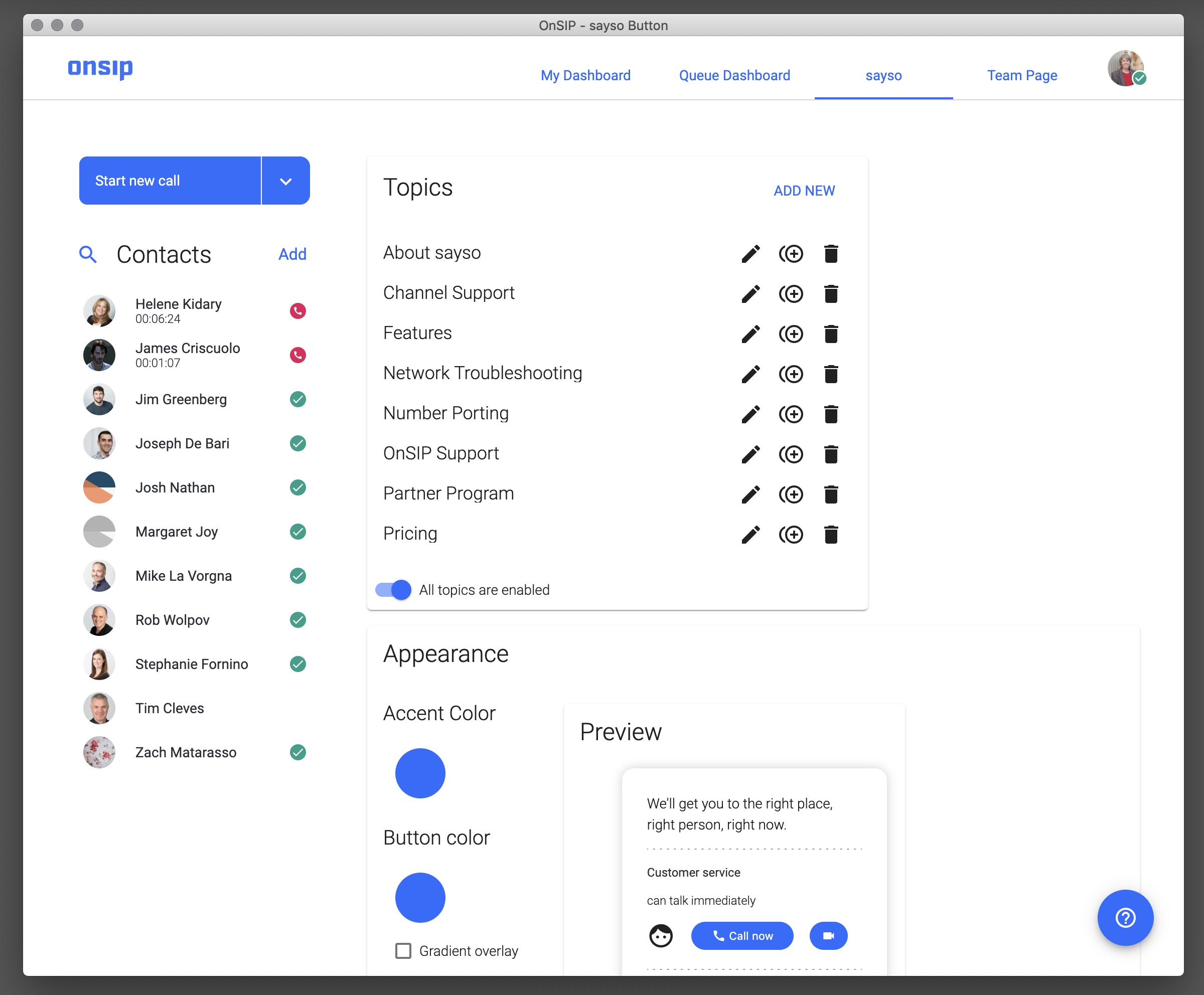Progress has typically moved slower in the business telecom space. There have been constant quality-of-life improvements over the years, such as desktop & mobile applications untethering workers from their desks or real-time alerts for call center managers, but if someone woke from a 50-year coma, they’d probably recognize phone numbers and dialpads and figure out the core functionality.
It’s a difficult thing for us to admit because we’re proud of how we’ve been able to offer previously out-of-reach capabilities to smaller and new businesses. Technical advancements are remarkable but not always apparent to the person calling in. However, it makes sense when you consider the millions of legacy devices that need to be supported. For example, a healthcare provider may wish to embrace new technology with open arms, but they can’t do so if it means abandoning the patients who try to call them on a decades-old landline.
If this feels like a buildup to some announcement that “the future is now,” you’re partially right. More accurately, the future is clear, we’ve had our eyes on it for a while, and it’s finally realistic to begin publicly moving in that direction. For customers who wish to see their phone system join the digital revolution in a more tangible way, read on for a brief explanation of sayso.
The Concept
The concept of sayso, put simply, applies the convenience of online text chat to personal, one-to-one voice or video calls.
First, how do we address the issue of legacy devices? Buying new equipment for an office is easy, but going to the homes of all your callers and swapping out their old phones with new hardware isn’t exactly an option. The solution must be software-based, but asking your callers to install an application just to speak with you would be ridiculous. The logical conclusion is the already-installed browser.
Today’s phone calls begin with an online search. The Yellow Pages are a relic, and while business cards and mailers have their role, interested buyers will look your company up prior to starting the conversation.
So how do your site visitors go from viewing your page to speaking with you? Right now, they probably see a string of numbers, which they need to transcribe into their phone. Then they listen to a recording telling them the number belongs to your business, which they already know. They listen to a list of options and advance through one menu, then another, until they are put into a queue to speak with a representative. People have come to expect this miserable experience, which is why some of them opt for text chat, which usually puts them in touch with the right person automatically.

Text chat has its own problems, though. People may be inclined to call it “real-time,” but real-time communication doesn’t include staring at the words “Your representative is typing” before receiving a response. It’s also painfully obvious when a representative is simultaneously conversing with five other people and their responses are auto-pasted templates. The reason phone calls feel personal isn’t just the inclusion of audio—it’s also because their attention is singularly focused on your conversation.
The concept of sayso, put simply, applies the convenience of online text chat to personal, one-to-one voice or video calls. Site visitors know immediately if someone is available to have a conversation and can do so without the hassle of dialing a number.

The Benefit for Your Business
Improving your callers’ experience is a feel-good story and an easy goal to agree with, but callers have become used to the status quo and aren’t exactly knocking down your door asking you to change. Taking the time to research and implement a new tool, as well as training your staff on how to use it, is an investment that you should expect to yield some return.
Cost
-
There is no learning curve for representatives who use the OnSIP app.
An incoming sayso call from your website behaves similarly to a typical incoming call. The Caller ID & phone number are simply replaced by the the discussion topic they’ve selected and the URL of the page they’re calling from. If your team is already using the OnSIP app, you can likely implement sayso without any additional training. -
Installing sayso is far simpler than rolling out another phone system.
Include a snippet of code just once in your website, similar to how you might install analytics software, and everything else is done in the app. “Topics” are similar to Groups or Queues—you give them a name, enroll the appropriate representatives, and can customize where and when they display on your site.
That’s it. Getting started requires very little time or effort, and as for the financial cost, sayso is completely free. If you’re not satisfied, it can be disabled in a matter of seconds.

Reward
- Reducing the number of steps between initiating a call and speaking with a human reduces the opportunities for callers to bounce.
- Cutting out the headaches caused by those steps results in callers who are less frustrated and more focused on the topic they want to discuss.
- Replacing form submissions and text chats with immediate one-to-one voice or video conversations gives your business a better opportunity to win or retain a customer.
These are the commonsense ideas that will drive the direction of sayso.
Call Context and Attribution
There’s also the benefit of call context and attribution. Right now, when your phone rings, it’s largely a mystery as to why. Yes, someone wants to speak with you, but it’s not a phone number you have memorized and you likely don’t know if the call was made to you directly or to a queue you’re enrolled in. With sayso, the incoming call can tell you, “someone is calling about pricing from acme.com/features. Here is a preview of their existing CRM data.”
Your representatives can stop asking, “Who are you and why are you calling?” (although they probably say it nicer than that) and start opening their calls with, “Hi, I see you’re curious about the pricing of our features. How can I help?” That conversation is then attributed to that representative, topic, and page. You’ll be able to see which pages are generating the most calls, which discussion topics are the most popular, which representatives have been the busiest, and so on.
The Current State of sayso

If you’re a long-time customer, some of this may sound reminiscent of InstaCall, a tool we rolled out for developers a few years ago. At that time, the underlying technology was experimental and browser support was thin, making it difficult for businesses to rely on InstaCall for business-critical communication.
Now that the major browsers (both desktop and mobile) have gotten their ducks in a row, we’ve used our prior experience and customer feedback to create a new-from-scratch product suitable for everyone. The core functionality of reliable, secure, and clear-sounding connections between a wide variety of endpoints was our primary objective. We’ve achieved that, and it’s available now in the OnSIP app.
Stay Tuned for What’s Next...
Next, we’re shifting our focus to building upon that core with a fresh approach to the design of the app, a system of sharing and breaking down call metrics, and a long list of CRMs we aim to integrate with.
We believe that three years from now, a number of providers will be working on tools similar to sayso, and five years from now, most site visitors will consider calling through a browser the norm.
We’re excited to blaze this trail with you, and we hope to hear your thoughts along the way.

